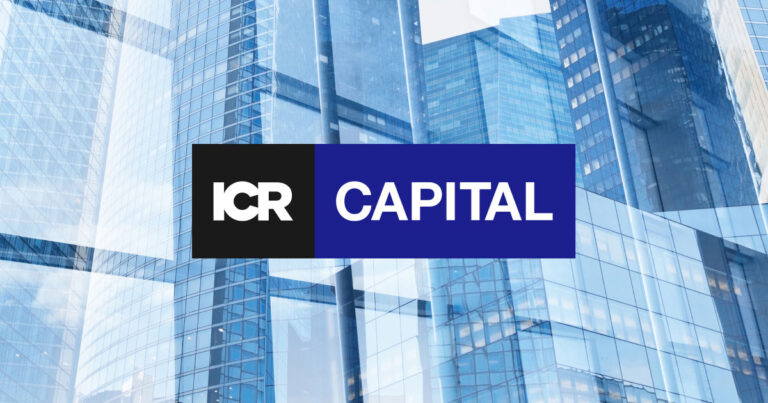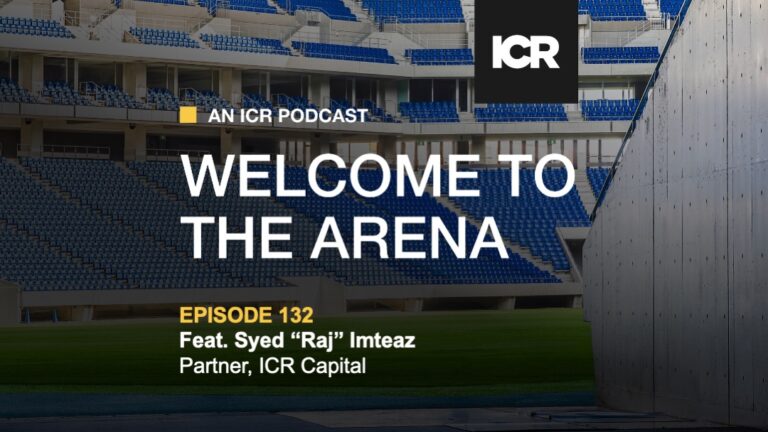Convertible Bond Refinancing: Your Options Explained
Convertible bonds are a popular financing option for many public companies, and in 2020-2021, the market witnessed more than $200bn of convertible issuance. Nearly all convertibles have five-to-seven-year maturities, and there is $170bn of convertible maturities in 2025-2027. The majority of convertibles are refinanced one to two- years ahead of maturity, prior to the liability “going current,” meaning the market is likely to see a refinancing wave in the next few years.
When deciding whether to refinance their existing convertible bonds, there are several key technical aspects and complexities that issuers need to consider. While refinancing of a convertible bond provides a number of unique challenges, there are tried-and-tested methods to resolve these issues. Additionally, convertible refinancing transactions come with a number of unexpected advantages.
In this article, we will cover:
- The basics of a convertible bond refinancing
- Overview of “delta hedging” and how it relates to a convertible refinancing
- Why a liability management transaction must be designed with delta hedging in mind
- Why liability management transactions are typically limited to up to 80% of existing deal size or a certain number of holders
- Common variations of convertible refinancing strategies and pros and cons
- Choosing the right execution partner for a convertible refinancing
Basics of Convertible Bond Refinancing
Convertible bonds do not actively trade like common stock, and any sizeable repurchase / refinancing of existing convertible bonds requires direct negotiation with the convertible holders. The list of current investors of a given convertible bond generally comes from Bloomberg which aggregates 13-F filings and other fund ownership reports. Bloomberg data and 13-F reports can be dated by several weeks to several months, so an issuer’s prior conversations with convertible investors and the lead bank’s market insight are also helpful in tracking the current investors of a bond. Based on these sources, in most cases, it is possible to get a fairly accurate sense of the holders’ list for a given convertible security.
Regardless of the many variables in a convertible refinancing, the negotiation process with the holders of an existing convertible bond broadly follows a market standard procedure – generally the lead bank will “wall cross” the top holders pursuant to a standard policy. The actual number of investors to be wall crossed and bonds to be repurchased depend on careful analysis by legal counsel to avoid a “creeping tender” (details on this below).
The wall cross process involves calling the compliance officer or the portfolio manager of the fund, giving them a no-names description of the potential deal, and receiving confirmation from them that they agree to the terms and conditions of the wall cross.
Once the investor agrees, the bank provides the name and details of the transaction to the portfolio manager and starts the negotiation process. Upon a wall cross, investors are precluded from (i) trading the issuer’s securities and (ii) engaging in any communication regarding the contemplated transaction externally until the transaction is completed or until a pre-determined cleansing date, whichever is earlier.
During the negotiation process, the bank, on behalf of the issuer, negotiates the repurchase price which tends to include a small repurchase premium over the last trade. The key discussion points in a refinancing process include:
- How many of the existing bonds are the investors willing to sell?
- What price do the investors want to receive / the issuer want to offer?
- What size of the new deal will the investors consider purchasing, if any?
- What is the maturity, coupon rate and conversion premium of the new deal, if applicable?
- Consideration for the old bonds (i.e. all cash, common stock, a new convertible bond, etc.)
- Any averaging period needed to balance the deltas
Out of these, the last two points are generally finalized ahead of time before the wall cross based on the issuer’s objectives and the lead bank’s recommendation instead of negotiating these as open items with investors. Typically, a range of outcomes on terms is also known prior to launch.
What is the “Creeping Tender Analysis”?
When approaching existing convertible investors, issuers must be mindful of the “creeping tender analysis,” which determines whether a repurchase or exchange of securities constitutes a tender offer under the Exchange Act. If a privately negotiated convertible repurchase or exchange has many of the characteristics of a public tender offer, then the private repurchase may be considered a public tender offer – this should be avoided as convertibles are equity-linked securities and there is potential for price manipulation during the 20-day public tender offer period.
The Securities and Exchange Commission (SEC) does not have a bright-line definition of what constitutes a tender offer. Instead, it is a “facts and circumstances” determination applying prior case law. One of the key tools used in this determination is the “Wellman Test,” which consists of eight factors surrounding the facts and circumstances of a specific repurchase.
The two most important factors in the “Wellman Test” are:
- How active and widespread is the solicitation?
- How substantial is the solicitation in terms of percentage of existing securities?
While the creeping tender test analysis requires careful considerations of the facts and circumstances, including analysis of an issuer’s convertible holders’ list, legal practitioners generally advise issuers to limit their offers to no more than approximately 10 holders and up to 80% of the aggregate principal amount of notes outstanding. This can help to make the repurchase or exchange substantially dissimilar from a tender offer, reducing the risk of triggering an SEC review of the transaction.
It is important to note that while the repurchase or refinancing of the old securities is limited to a certain number of holders and a certain percentage of the existing investors, this rule does not preclude the lead bank / the issuer from selling any new bonds to additional investors outside of the current note holders.
When executing a convertible exchange or a repurchase, it is critical to speak with counsel ahead of time to get their views on the maximum number of investors to approach and repurchase from, as well as the maximum percentage of bonds to repurchase. Based on these guidelines, the lead bank can then wall-cross the appropriate number of investors, conduct the private negotiations with them, and balance the issuer’s execution goal of retiring a certain quantum of existing bonds vs. managing the risk of triggering a creeping tender.
What is “Delta Hedging”?
When a new convertible is issued, hedge funds initially short shares against their long convertible position to be equity neutral. This shorting is driven by the deal structure, equity volatility, etc. In most cases, the shorting amount tends to be 60-75% of the underlying shares (45-55% of the principal amount) for the bonds allocated to hedge funds. The amount of shares that need to be shorted is called “delta.”
Delta can be simplistically thought of as the probability that the convertible will turn into equity, and delta as a percent of underlying shares can range from 0% to 100% during the life of the bond. If the stock price declines significantly at some point during the life of the security, the convertible becomes less equity-sensitive and delta decreases. On the other hand, when the stock price rises significantly and is well above the conversion price, the convertible becomes equity-like and delta increases.
After the day-one hedging on the issue date, hedge funds continue to adjust their hedge position by either purchasing shares or by selling more shares. This process is called “Dynamic Delta Hedging” or “Delta Rebalancing.” This day-to-day hedging tends to be small and contra-cyclical, and this should not materially impact the issuer’s stock price on an ongoing basis.
What is “Delta Matching” and Why Is It Important?
When an issuer plans to repurchase an existing convertible bond from a hedge fund, there is likely to be a short position against that convertible. This short position depends on how in-the-money or out-of-the-money the convertible is. The more in-the-money the convertible, the higher the delta and the short position; the more out-of-the-money the convertible, the lower the delta and the short position.
When repurchasing or refinancing an existing convertible, an issuer must account for this delta. It is natural to think: “These funds shorted my shares – I don’t like that, and this their headache. Why should I care?”
The reason we have to care is that delta is an integral part of the trade that the hedge funds are set up on – if we want to repurchase the bonds from them, we have to give them:
- Shares so they can close out their short position,
- A new convert so that they can match their deltas (i.e. they can cancel out their need to purchase shares / cover their short from the old convertible repurchase with their need to short shares in the new deal)
- An averaging period to cover their short, or
- A higher repurchase price to compensate investors for the risk around closing the delta
In other words, we can’t just say “I don’t care about your delta – you figure it out.” Investors and banks quote a repurchase price against a given stock price with the understanding that the investor will be able to cover their short position at that exact stock price. The repurchase price will change if stock price changes, and the repurchase price is not valid if an issuer does not provide the investor a way to get out of their short position. This causes both a challenge and an opportunity for issuers.
The challenge is that we have to delicately manage this delta math. The opportunity is that depending on the delta of the existing convertible and the size of a potential new deal, it is possible for an issuer to issue a new convertible and raise capital without any new shorting and therefore any stock price impact.
Let’s take the following example:
- An issuer issued a $300mm convertible bond 3 years ago
- The stock at issuance was $80, and conversion price was $100
- The deal had 3mm underlying shares
- Stock is up 30% since issuance, and delta as percent of shares is now 70%.
- Assuming half of the deal is owned by hedge funds, 1.1mm shares ($109mm) are shorted against a $150mm hedged convertible position (3mm x 50% x 70% = 1.1mm shares)
If we want to repurchase this $150mm principal amount of the convert from these hedge funds, we can do one of following:
- Share Delivery for the Consideration: As a part of the consideration, we can give the investors 1.1mm shares and rest of the value (including a small repurchase premium) in cash. The investors will take these shares and will immediately close out their short position – there should not be any share purchase or sale in the market as long as any incremental value above the 1.1mm shares is delivered in cash.
- All-Cash Repurchase: We can pay the investors the market price of the bonds (plus a small repurchase premium) in cash. However, in that case, investors will have to buy 1.1mm shares in the open market to close out their short position. Depending on the company’s stock trading liquidity, this may take more than a day or even several days or weeks, and the investors will require an averaging period over which they will cover their short. More importantly, our convertible repurchase price will be tied to this average short covering price over the averaging period.
- Issuing a New Convertible: We can also deliver a new convertible to the investors. If we deliver $200-225mm of a new convertible to these investors, they would have had to short $100-110mm shares. However, since they already have a similar-sized short position, they can instead roll that short position into the new deal. Assuming we sell another $100-200mm to long-only investors, we have now issued a $300-400mm new convertible without any shorting / stock price risk.
A properly delta matched convertible can even allow for an overnight deal eliminating any stock price risk. In an overnight deal, the deal is publicly launched after market close and priced before the next morning’s market open, thus eliminating any stock price risk in the deal. These types of overnight deals are often executed after a two-day wall-cross process. A couple of ICR’s recent deals were successfully structured and executed this way.
While needing to manage the deltas in a convertible refinancing transaction adds a layer of complexity, in most cases, the short covering from an existing convertible is an asset and a positive which can help the “next” deal.
Key Convertible Refinancing Strategies
Convertible refinancing strategies can take a number of forms depending on the key objectives of the company:
- Does the company want to tactically repurchase / partially repay its existing convertible securities or want to strategically refinance the security?
- Does the company want to execute the transaction privately over a short period of time or execute it publicly over a 20-business-day period?
- Does the company want to pay cash only, fund the repurchase with a new convertible, or convert the convertible bond into common stock?
For the purposes of this article, we will focus on strategic, private alternatives which are the most common refinancing strategies. However, before delving deeper into those alternatives, let us highlight the other strategies.
If a company wants to tactically repurchase / partially repay its existing convertible securities, it can consider a number of alternatives:
- Open market cash repurchase in small sizes
- 10b5-1 repurchase based on a pre-set grid that can run through blackout periods
- Larger targeted repurchases
- Convertible exchange into equity
On the other end of the spectrum, if a company wants to repurchase / refinance the maximum amount of the bonds, it can consider public alternatives:
- Public tender offer
- Public exchange
Given the 20-business-day market risk and equity-linked nature of a convertible bond, most issuers avoid the public alternatives.
The two most common types of convertible refinancing strategies are executed privately:
(1) A new convertible issuance plus a private, negotiated repurchase of existing convertibles, and
(2) A private 4(a)(2) exchange of an existing security into a new one.
Both transactions generally include a 24–48-hour wall-cross process ahead of the public launch whereby the lead bank conducts negotiations with existing investors (and often new investors) and approximate terms of the deal are already known at the time of the public deal launch.
What Is a New Issue Plus Repurchase?
As the name suggests, a new issue plus a repurchase consists of:
- Issuing a new convertible security to existing and new convertible investors at market standard terms, often under Rule 144A, and
- Repurchasing the old security from existing investors in exchange for cash, often raised from the sale of the new securities
This process is substantially similar to simply issuing a new convertible security as the primary process items in this structure are driven by the issuance of the new convertible. The repurchase piece of this transaction is fairly simple from a documentation perspective.
Under this method, an issuer somewhat decouples the two legs (“issuance of the new bonds” vs. “repurchase of the old bonds”) of the transaction and markets and issues the new convertible to the full investor universe through a price discovery process. The existing investors are approached with a cash repurchase price and are welcome to participate in the new offering (and they generally do), but except for esoteric situations, the two legs of the transaction are not explicitly tied. In other words, an existing convertible investor may simply sell out of their bonds without being forced to purchase the new securities, and the issuer can fund the cash shortfall by selling the new securities to new investors. As a result, the issuer generally gets better economic terms in this strategy vs. a 4(a)(2) private exchange.
A new issue plus repurchase is often executed as a wall cross plus a one-day publicly marketed transaction; however, as long as the deltas are matched either through the proper sizing of the new issuance vs. the old convertible repurchase or through a share repurchase / share delivery, this transaction can easily be executed on an overnight basis. A couple of ICR’s recent convertible refinancing transactions (Veeco and InterDigital) were executed on an overnight basis.
What Is a 4(a)(2) Private Exchange?
In a private exchange, the lead bank, on behalf of the issuer, approaches a handful of existing investors and offers to exchange their old bonds for new bonds. This transaction is executed as a private placement under Section 4(a)(2) of the Securities Act of 1933. In some recent cases, issuers have also sold new securities for cash concurrently with the private exchange pursuant to a “subscription agreement.”
Since the issuer is negotiating with a handful of investors who are already in the company’s cap table, this strategy allows for more creative structuring. For example, if a convertible is significantly out-of-the-money and trading at a large discount to par, an exchange may allow for a very high premium security issued at a discount.
However, since issuers negotiate with a handful of investors and not the broad investor universe, they may leave some incremental value on the table in a 4(a)(2) private exchange vs. a new issue plus repurchase.
Which Strategy Is More Attractive to Issuers?
Depending on the particular bias of a firm, different people may push an issuer toward different strategies for self-serving reasons. For example, a small firm with no sales desk may be unable to broadly market a convertible transaction and prefer that you execute an exchange. They may mention that an exchange is the only way to achieve an overnight deal – however, that is not true because a new issuer plus repurchase can also be executed and have been executed in an overnight format. What allows for an overnight deal is not the format of the transaction, but rather the math behind delta matching.
One may also point out that exchanges have a slightly lower fee than new convertible offerings. Even if that is true, the reason behind the lower fee is that convertible exchanges are often executed by a single bank / firm whereas public convertible offerings often have more than one bookrunner. The lower fee in an exchange is due to the fact that a single bank receives the full fee pie and not driven by anything unique about the structure.
On the other hand, a 144A new convertible offering receives league table credit on Bloomberg while a 4(a)(2) exchange does not – this league table credit may make some people partial to the new issue plus repurchase strategy.
A new issue plus repurchase has a number of benefits vs. an exchange:
- Better overall economics as the company approaches the broad convertible universe and the two transactions are “de-coupled”
- Additional flexibility around sizing of the new deal
- Bank manages settlement process unlike direct settlement with investors in a 4(a)(2) exchange process
- Ability to reward more partners and receive ancillary benefits, such as research and / or credit
- No need for individual settlement with investors unlike a 4(a)(2) exchange
However, a 4(a)(2) exchange also has some unique advantages:
- More creative structuring given the deal is negotiated with existing investors
- Less documentation (although documentation workload for the new issue plus repurchase should also be manageable given prior convertible documents can be updated and re-used for the new issue easily)
- Less diligence / no need for a comfort letter or negative assurance
At the end of the day, the choice of new issue plus repurchase vs. exchange depends on the specific facts and circumstances of the situation and an issuer’s specific objectives. A new issue plus repurchase generally makes more sense in most of the standard refinancing scenarios, whereas a private exchange makes more sense in a scenario where an existing convertible is significantly out-of-the-money and creative structuring is called for.
How to Choose the Right Execution Partner for Your Convertible Refinancing Transaction?
Historically, two types of banks have executed convertible refinancing transactions: bulge bracket banks and boutique convertible-focused banks. When executing a refinancing transaction, it is important to choose a bank – whether bulge bracket or boutique – with a proper convertible sales and trading desk. In some cases, some boutique banks known for convertible expertise and experience may even be a better choice, particularly for smaller exchange deals where large banks may not provide full focus.
On the other hand, there are some banks that do not have convertible expertise and / or a dedicated sales and trading desk, and choosing those banks for your refinancing could be a recipe for disaster. Therefore, is important to ascertain the banking and sales and trading capabilities of your lead bank ahead of time.
In recent years, we have seen some convertible advisors “placing” convertible exchange transactions directly to investors (i.e. acting in the capacity of a bank instead of an advisor). We are big believers in the convertible advisory services provided by independent advisors – convertible advisors can save issuers significant time and value without any out-of-pocket cost. Eighty percent of convertible bond issuers used an advisor this year. However, we do not believe in the idea of convertible placements by advisors.
Here are a few reasons we think clients should use a reputable investment bank with a convertible banking team and a proper sales and trading desk to execute their convertible refinancing / exchange transactions:
- Companies generally achieve better terms when they hire an investment bank to place a deal
- Capped call execution is easier with a bank as they have the “swaps” desk to manage the delta
- Advisors do not trade the bonds, and without the implicit promise of a liquid market, investors may ask for incremental cheapness in a deal
- Any subsequent repurchase / clean-up trade is easier when working through a bank with a sales and trading desk as they make a market in the bonds
- Investment banks have a more tried and tested deal process, reducing future legal liability for the company
- Paying the full-fee pie to a single, small institution generally burns Street-wide relationship and makes future credit and / or research discussions more difficult
- In many cases, the settlement process is easier when going through a bank with a sales and trading team
We think clients achieve better deals when they hire an investment bank to do the job of an investment bank while hiring an independent advisor to help with the process, whether a new issue plus repurchase or a 4(a)(2) exchange.
Conclusion
Convertible liability management transactions are complex and come with challenges around delta matching, creeping tender analysis, etc. However, they also provide a number of opportunities due to a captive audience already familiar with the equity and credit stories and an existing short position against the old convertible. Depending on how in-the-money or out-of-the-money a convertible is, an issuer can use creative structuring to refinance the transaction and / or can use the existing delta to execute the refinancing on an overnight basis. Therefore, despite the complexities, a convertible is not a liability but rather an asset when it comes to a refinancing transaction.
ICR Capital has a world-class Convertible and Equity Derivatives Advisory team that gives clients unbiased advice, saves them time and money, and helps issuers achieve a best-in-class deal easily and efficiently. In the last several months, we have advised on $4bn+ of deals for companies like Uber, Super Micro, Federal Realty, and Xerox. Please email Syed.Imteaz@icrcapital.com or contact us to learn more about how we can help.
First appeared on ICRinc.com.



